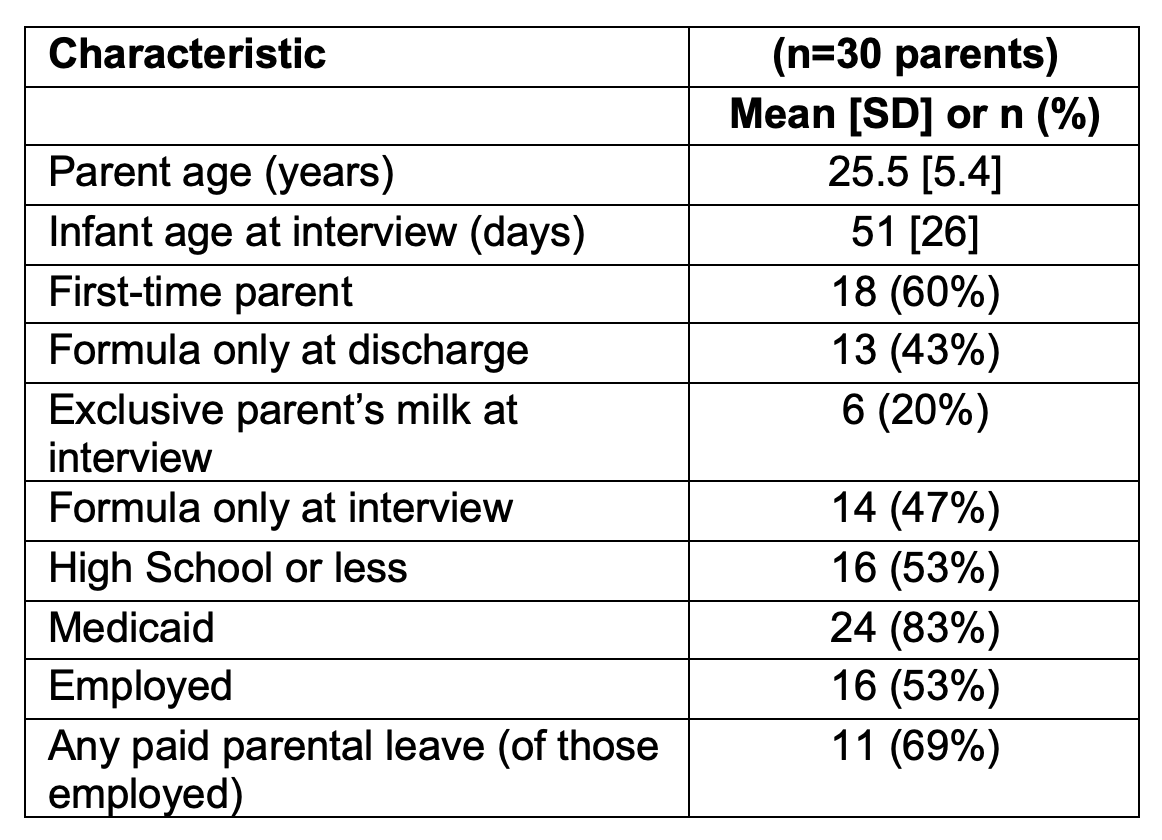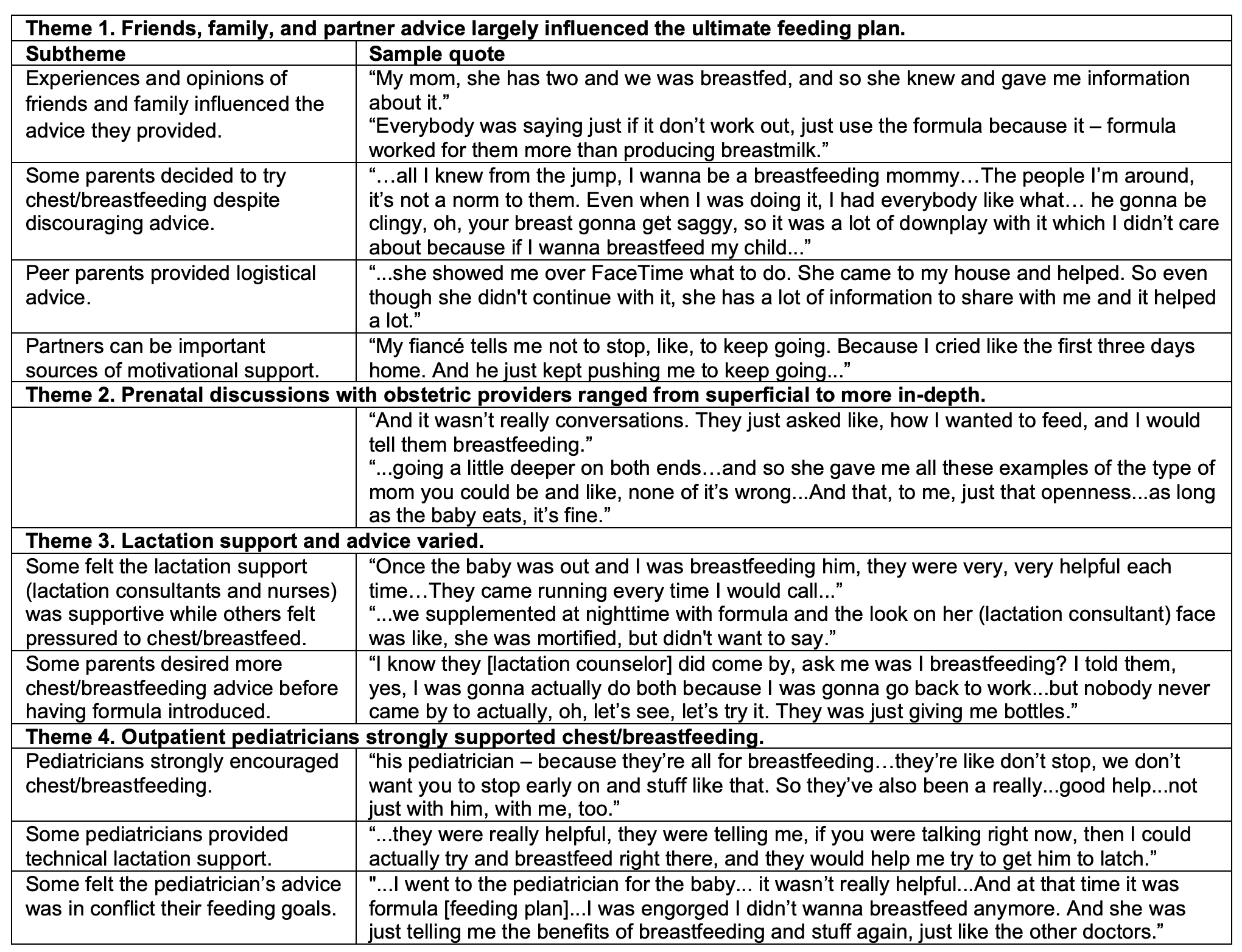Breastfeeding/Human Milk
Breastfeeding/Human Milk 2: Addressing Inequities in Lactation
373 - Perspectives of Black Birthing Parents’ Sources of Advice and Information on Infant Feeding
Publication Number: 373.102

Michelle-Marie Pena, MD (she/her/hers)
Assistant Professor of Pediatrics
Emory University and Children's Healthcare of Atlanta
Atlanta, Georgia, United States
Presenting Author(s)
Background:
Racial and ethnic inequities in chest/breastfeeding have been documented nationally and locally at the Hospital of the University of Pennsylvania (HUP); Black individuals have lower rates than white individuals. To inform our local improvement efforts, we conducted a mixed methods study to understand the drivers of inequities in chest/breastfeeding rates directly from parents.
Objective:
To understand perspectives of Black or African American postpartum parents at HUP regarding sources of advice and information on infant feeding prenatally and during the first weeks postpartum.
Design/Methods:
We recruited postpartum parents who identify as Black or African American and delivered well newborns ≥35 weeks at HUP using convenience and purposive sampling, including parents who provided exclusive formula and any parent’s milk at discharge. Semi-structured interviews of parents were conducted 2-16 weeks postpartum by phone by a community partner who identifies as Black with expertise in chest/breastfeeding and trauma-informed care. Participants were then surveyed on feeding information sources. Analytical notes and memos, open coding, and axial coding techniques were used by dual coders using ATLAS.ti v7. We used inductive theory building and modified grounded theory to identify key themes.
Results:
We interviewed 30 families with varied feeding plans, with 13 providing exclusive formula and 17 providing any parent’s milk at discharge (Table 1). Key themes are summarized in Table 2. Participants felt heavily influenced by advice and experiences of their families, partners, and friends. Parents shared a range of experiences with obstetric providers prenatally, from superficial to in-depth discussions. Inpatient lactation support ranged from supportive to parents feeling pressured to chest/breastfeed. Some parents desired more information before having formula introduced inpatient. Outpatient pediatricians strongly supported chest/breastfeeding; though some parents felt that their advice was in conflict with their feeding goals. Survey data on information sources are summarized in Figure 1, showing family, friends, social media and online resources as prevalent information sources.
Conclusion(s):
Parents who identify as Black or African American receive a range of information from their community, obstetric and lactation providers, and pediatricians. Social media and online resources are also frequently referenced. These data highlight influential stakeholders and resources that may be leveraged to improve lactation success for Black or African American parents desiring to chest/breastfeed.

.png)

